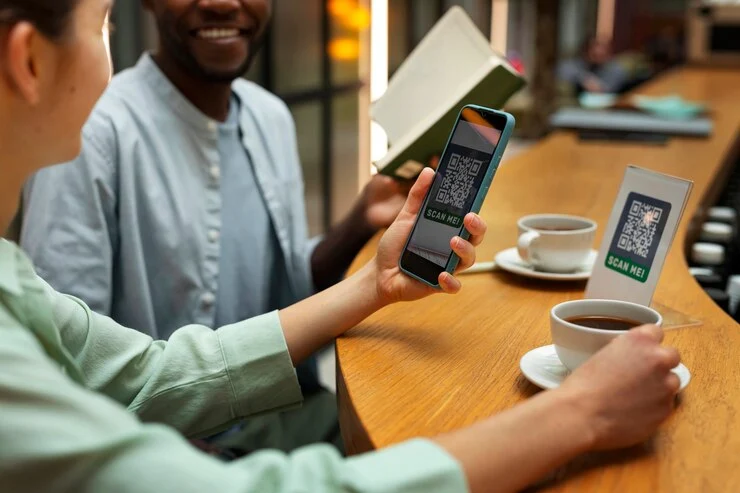Mobile payment technology has transformed the way we handle transactions. From buying a cup of coffee to paying utility bills, the convenience of making payments with just a few taps on your smartphone has never been more accessible. But what exactly is mobile payment, and how is it revolutionizing the financial landscape? Here, we’ll dive into everything you need to know about mobile payments, answer your pressing questions, and explore how this technology is solving common transaction problems.
- What is Mobile Payment?
- How Does Mobile Payment Work?
- The Benefits of Using Mobile Payments
- Revolutionizing Transactions: How Mobile Payments Are Changing the Financial Industry?
- What Are the Different Types of Mobile Payments?
- What Are the Future Trends in Mobile Payments?
- Conclusion
- Common Questions About Mobile Payments
What is Mobile Payment?
Mobile payment refers to the use of a smartphone or mobile device to transfer money or make payments for goods and services. Unlike traditional methods like cash or credit cards, mobile payments allow users to complete transactions digitally via mobile wallets or payment apps. Some popular examples include Apple Pay, Google Wallet, Samsung Pay, and PayPal.
How Does Mobile Payment Work?
Mobile payments rely on Near Field Communication (NFC), QR codes, or mobile banking apps. Here’s a quick overview of how it works:
- Download a Payment App: First, you’ll need a payment app or mobile wallet like Google Pay or Apple Pay.
- Link a Card or Bank Account: Add your credit/debit card or bank account to the app.
- Make a Purchase: When paying, simply tap your phone near an NFC-enabled terminal, scan a QR code, or transfer funds through the app.
The process is secure, quick, and eliminates the need to carry cash or physical cards.
The Benefits of Using Mobile Payments
Mobile payments offer a range of benefits that make them appealing for both consumers and businesses.
Convenience
With mobile payments, there’s no need to carry cash or cards. All your payment methods are stored in one app, making transactions faster and more convenient.
Speed
A major advantage of mobile payments is their speed. It takes only a few seconds to complete a transaction, cutting down on checkout times for both in-person and online shopping.
Security
Mobile payment apps often come with robust security features like encryption, tokenization, and biometric authentication (fingerprint or face recognition). This makes it more secure than carrying cash or physical cards.
Tracking Expenses
Mobile wallets provide a detailed transaction history, making it easier for you to track spending and manage your budget.
Rewards and Discounts
Many mobile payment apps offer loyalty programs, rewards, or cashback opportunities. This is a win-win for users who want to save money while making purchases.
Revolutionizing Transactions: How Mobile Payments Are Changing the Financial Industry?
Cashless Society
Mobile payments are leading us toward a cashless society where digital payments replace physical currency. This trend is making transactions more efficient and reducing the need for paper money.
Global Accessibility
With mobile payments, anyone with a smartphone and internet connection can access banking services. This is particularly beneficial in regions with limited banking infrastructure, helping to bring financial inclusion to underserved populations.
Reduced Transaction Costs
For businesses, mobile payments can reduce the costs associated with handling cash or traditional card processing fees. Digital payments often have lower fees, especially for small businesses.
Seamless Online Shopping
Mobile payments simplify the online shopping experience. With the rise of e-commerce, integrating payment apps into websites or apps allows users to complete purchases in just a few taps, improving customer satisfaction.

What Are the Different Types of Mobile Payments?
NFC Payments
NFC (Near Field Communication) allows for contactless payments at checkout terminals. Simply tap your phone near the terminal, and the payment is processed.
QR Code Payments
QR codes can be scanned to complete transactions. This method is popular in many countries for small businesses or peer-to-peer payments.
Mobile Banking Apps
Many banks offer mobile apps that allow customers to transfer money, pay bills, and manage accounts on the go.
Peer-to-Peer (P2P) Payments
Apps like Venmo and Cash App allow users to send money to friends and family instantly. These platforms make splitting bills or paying back loans hassle-free.
What Are the Future Trends in Mobile Payments?
Biometric Authentication
Expect to see more apps adopting biometric authentication methods. As fingerprint and facial recognition technology becomes more sophisticated, it will further enhance the security of mobile payments.
Cryptocurrency Integration
Several mobile payment platforms are starting to incorporate cryptocurrency payments. This trend could revolutionize cross-border transactions and further reduce transaction fees.
AI and Machine Learning
AI is expected to play a bigger role in fraud detection for mobile payments. Machine learning algorithms can quickly spot suspicious activity and prevent fraud before it occurs.
Wearable Technology
The rise of wearables, like smartwatches, is also changing the mobile payment landscape. These devices allow users to make payments without even reaching for their phones.
Conclusion
The future of transactions lies in mobile payments. With increased convenience, security, and accessibility, this technology is set to revolutionize how we interact with money. From NFC and QR codes to cryptocurrency and biometric authentication, mobile payments are driving the financial world toward a digital-first future. If you haven’t already embraced mobile payments, now is the perfect time to start enjoying the speed, security, and ease they offer.
Common Questions About Mobile Payments
Are Mobile Payments Safe?
Yes, mobile payments are generally very safe. Most apps use encryption and tokenization to protect your information. Tokenization means that your card details are replaced with a unique code for each transaction, making it harder for hackers to access your data. Additionally, biometric authentication like fingerprint or facial recognition adds an extra layer of security.
Can You Use Mobile Payments Anywhere?
Most major retailers and e-commerce platforms now accept mobile payments. However, the availability of mobile payment options can vary depending on the country and the vendor’s technology. NFC terminals and QR codes are more common in urban areas or developed countries.
How Do Mobile Payments Work Without Internet?
Some mobile payment systems, like Apple Pay or Samsung Pay, use NFC technology that works even without an internet connection. This makes it possible to complete transactions even in areas with poor reception.
What If I Lose My Phone?
Losing your phone can be concerning, but mobile payment apps have built-in security features to protect your financial information. Most apps allow you to remotely lock your device or wipe its data. Additionally, without biometric authentication (fingerprint or face ID), your payment app won’t authorize any transactions.








